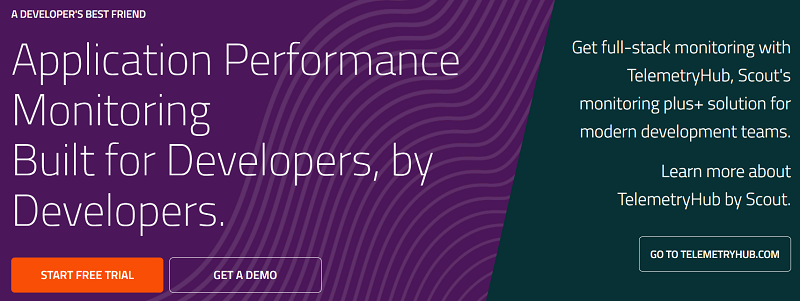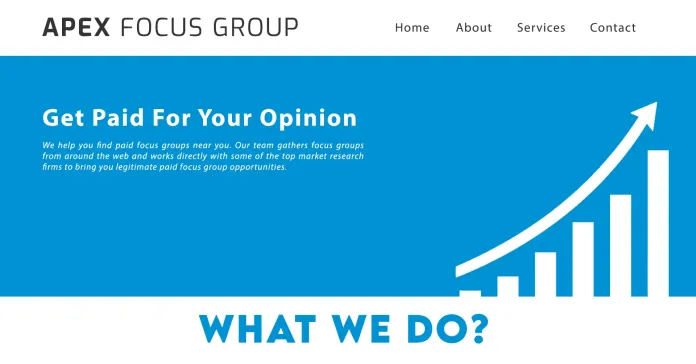
In today’s tech-driven and digital computing environment, Application Performance Management (APM) can help provide optimal application management.
APM technologies help enterprises ensure availability, improve application performance, and enhance user experiences by monitoring many application components to track reaction time, latency, and overall application health.
Organizations can identify and prevent application performance issues before they put business users at risk by using metrics generated by APM.
Since most apps in today’s dynamic tech world are cloud-native, APMs have evolved to offer cloud-based applications as well. In a sense, traditional APMs were designed to monitor applications hosted on local infrastructure.
Cloud Application Performance Management (APM): What Is It?
The performance and availability of applications hosted on-premises (private), in the public cloud, or in a hybrid configuration can be managed with the help of Cloud Application Performance Management (Cloud APM), a comprehensive cloud-based solution.
This solution ensures that your apps run as efficiently as possible by giving you complete transparency, control and automation over them.
According to PRNewswire, by 2026, the application performance management (APM) industry is expected to grow to $12 billion globally. Given how widely APMs are used, it is obvious that both new and old APMs will be in high demand.
Operation of Cloud Application Performance Management
By optimizing IT resources such as hardware and software and providing visibility into various application-related components, Cloud APM enables enterprises to deliver exceptional user experiences.
Performance data is collected by agents and data collectors installed on application servers or end-user devices and sent to the Cloud APM server through several sources. Data is aggregated and consolidated before being displayed on the Cloud APM console. Among other things, the console is a single, unified user experience that offers a robust view of hybrid apps through graphs and charts.
Using the console, you can monitor the current state of your apps in real-time, identify any issues, and ensure they are performing at the required level. Cloud APM functionality is enhanced through integration with other products and components.
Cloud APM systems collect information about how different hardware, software, and application components are performing, enabling developers to identify problems, fix them, and improve the performance of their applications.
Advantages of Application Performance Management
In today’s digitally connected world, people’s lives are centered around applications. Thus, your program will not survive in today’s fiercely competitive digital environment if it offers a subpar user experience.
APM solutions assist businesses in making data-driven decisions that improve the user experience overall by providing them with greater visibility into the operation of their applications.
Among the benefits are:
- Application uptime and stability are increased.
- Provide information about any issues that may cause any delays.
- Reduction in operational costs as a result of reduced performance incidents.
- Problems with application performance are identified and fixed quickly.
- Better utilization of infrastructure.
- Productivity has improved at the developer and operational levels.
- Higher conversion rates are a direct result of better user experiences.
- IT departments now have more power to work more efficiently.
- A better understanding of the interconnected elements of your app.
APM is an important but often neglected component of software development. It ensures that programs perform at their best by monitoring their performance and spotting potential problems.
These are some of the Top Cloud Application Performance Management (APM) providers currently in the market;
1) New Relic
The first on the list of Cloud Application Performance Management (APM) is New Relic. The leading application monitoring platform, New Relic helps track, debug, and optimize applications while reducing downtime and increasing reliability for both web and mobile apps.
The platform offers thorough insights and total visibility into your application stack for businesses of all sizes, enabling prompt problem-solving and improved application performance.
By utilizing the tools and resources provided by NewRelic, system administrators, DevOps engineers, and site reliability engineers can ensure application speed and uptime for maximum performance.
Robust analytics, real-time data visualization, and automated alerts provide early problem detection and quick resolution before a critical failure or outage occurs. Its platform can be seamlessly integrated into your existing workflow by integrating with over 500 applications.
Features
- Any source of telemetry data can be hosted by it.
- Up to 80% instant problem resolution.
- Monitoring SLAs and KPIs in real-time to resolve issues before they impact customers.
- Get immediate access to all vulnerabilities in applications.
The platform supports numerous programming languages and frameworks, such as Java, Ruby, Node.js, etc., in addition to all of its capabilities. New Relic is a comprehensive software offering over 30 features on one platform for IT stack monitoring, analysis, debugging and optimization. Its price is determined by actual consumption.
2) AppDynamics
Organizations need to know in real-time how well their apps are performing in today’s digital age, and Cisco subsidiary AppDynamics can help. With its comprehensive portfolio of application and business performance monitoring tools, AppDynamics ensures that every aspect of even the most complex multi-cloud configurations is visible, optimized, and ready to scale.
Businesses can identify and resolve performance issues in real-time with AppDynamics’ end-to-end application visibility, ensuring uninterrupted application functionality.
Instant root cause diagnosis is provided by its patented Cognition Engine, which leverages machine learning to identify anomalies and reduce MTTR. Linking software metrics to business performance measures helps IT administrators identify critical issues and resolve them more quickly.
IT teams can swiftly determine what and where application performance is impacted by its real-time ability to uncover the core causes of issues with applications, ranging from code-level issues to third-party APIs. taking place
Features
- Both anomaly detection and baseline are automated.
- Establish a link between whole-stack performance and key business metrics to quickly address issues before they have a negative impact on the bottom line.
- Conceptualize user experience to ensure apps work properly.
- To gain insight into performance, one can use DNS, ISP, third-party SAS, and other performance indicators.
With AppDynamics, a comprehensive application performance management solution, you can keep a close eye on the health of your application stack, get early warnings of problems, and take immediate action to fix them. Their abundance of insights will enable businesses to make well-informed selections about advancements and upgrades.
3) Datadog
For APM and Observability, Datadog is recognized as a Gartner Magic Quadrant Leader.
Code-level monitoring for microservices, distributed systems, containerized apps, and other back-end services and databases can be done with DataDog, a comprehensive AI-powered solution.
Enterprises of all sizes can use DataDog’s APM solution to quickly identify and address issues, minimizing downtime and business disruption. Long-term performance patterns and key performance indicators are made easy to find with customized alerts and visualizations.
Thanks to Datadog’s extensive ingest capabilities, users can choose from a variety of ingest options for their specific use cases. Users can quickly make sense of the vast amount of data generated by these different ingestion techniques because of their robust analysis and visualization tools.
Features
- Application stability is increased by using the Datadog UI, Terraform provider, and APIs.
- Finds production-level vulnerabilities and code vulnerabilities and fixes them before they become a breach.
- Reduce MTTD with personalized and automated machine learning-based notifications.
- Misplacement is automatically detected.
Datadog is a great tool for optimizing resource utilization and application performance, finding and fixing the source of problems, and working more efficiently together to deliver a flawless experience to end users.
4) Scout APM
Scout is a tool for businesses of all sizes to track, identify, and improve application performance issues. Its low overhead on application performance is one of its distinguishing features, making it an excellent tool for monitoring applications in production settings.
This is essential to provide developers and IT teams with comprehensive insight into how different parts of an application are performing, which helps them identify bottlenecks before they cause major bottlenecks.
The platform enables IT teams and developers to stay informed about infrastructure and issues by offering real-time metrics, full trace analysis, database query analysis, profiling, and error tracking. Respond immediately.
The full-stack application is monitored through its TelemetryHub module. Whether your application is built with monolithic, micro services, serverless architecture, or a combination of these, distributed tracing lets you quickly identify how your application works from start to finish. Can help organize, prioritize and solve problems.
Features
- Memory-related requests are detected by memory bloat detection.
- Alerts and notifications for various online applications and background tasks.
- Looking for lazy queries in the database.
- You can use the request queue to find out how long it takes for an upstream application to reach you.
- Ability to track transactions between multiple application levels.
Designed specifically for today’s modern development teams, Scout Application Monitoring is a lightweight, enterprise-grade application monitoring solution. Developers of all skill levels find the tool appealing due to its easy setup process and user-friendly UI. Instead of being node-based, its cost is transaction-based and fixed per month. For open source, Scout APM is free.
5) Elastic Observability
In the 2022 Gartner APM and Observability Report, Elastic is recognized as insightful. Additionally, it has won the top three Automatic End-to-End Observability Awards from EMA (Enterprise Management Associates).
One of the modules of the Resilience stack, Resilience Observability, monitors and provides insights into log analysis, synthetic monitoring, real user monitoring, infrastructure monitoring, and application performance monitoring.
It offers complete visibility into services, apps, and infrastructure for distributed and cloud-native applications.
Its monitoring provides stakeholders with real-time insight into infrastructure and application performance, allowing them to assess system health and performance and make data-driven decisions that will improve business outcomes. Elastic, built by one of the world’s most popular software development firms.
Elastic Observability also has anomaly detection and alerting features powered by machine learning, enabling teams to proactively find problems and fix them before they get worse. From a security perspective, it provides more protection and uses cloud security, endpoint security, and Elastic SIEM and security analytics to secure every system and combat online attacks.
The system monitors enormous infrastructure thanks to more than 200 connectors, including ones with different cloud computing platforms like AWS, Microsoft Azure, and Google Cloud.
End-user performance can also be monitored by URL, operating system, browser, and location to gain insight into the performance of applications on end-user systems.
Features
- Map service dependencies and automatically detect deviations.
- Live Tel Troubleshooting in real time.
- Uses anomaly detection and log classification to find patterns and outliers.
- Continuously monitor and validate customer experiences.
For enterprises of all shapes and sizes, Elastic Observability is an extensible and adaptable platform for managing end-to-end application performance and related metrics while tightly monitoring infrastructure.
6) Instana
Application performance monitoring and Observability are key areas of focus for IBM’s Instana. Regardless of application location, it accelerates CI/CD pipelines and enhances application performance management.
With its AI-powered platform, Instana leads the industry in application performance monitoring, offering automated tools for troubleshooting and discovery.
Instana includes six essential capabilities for today’s development and operations teams: application perspective, unrestricted analytics, automated discovery and monitoring, contextual leaders, pipeline feedback, and root cause analysis.
All services are instantly discovered and mapped by Instana, which also monitors observation metrics, tracks every application, profiles every process, maps all application dependencies, and speeds up problem-solving. Applications that are hybrid, multi-cloud, and cloud-native can all benefit from this.
Features
- Two hundred fifty domain-specific sensors for quick search.
- Automate dependency mapping to provide flexible application viewpoints throughout the stack.
- Root Cause Analysis Automation.
- Fully decentralized tracking and one-second metrics for the software deployment process that work instantly.
Whether you work for a large company or a small business and need real-time performance monitoring and automated application stack discovery,
Instana will meet your needs if you want analytics with root cause analysis and optimal performance with unlimited analytics. A two-week free trial period is available for the software.
7) Google Cloud Operations
A set of resources and services called Google Cloud Operations lets cloud users monitor and manage their infrastructure and apps. These tools automate processes, monitor and report on cloud resources and services, diagnose problems, and evaluate the stability and performance of applications.
Google Cloud Operations provides comprehensive logging, diagnostics, and monitoring for applications running on-premise infrastructure, Google Cloud, and other clouds.
Cloud Monitoring and Google Cloud Logging are key components. Together, they provide the in-depth visibility needed to monitor your apps and infrastructure.
Cloud Logging lets you get started quickly by automatically consuming the platform and audit logs from Google Cloud. For the purpose of monitoring and controlling non-Google cloud services, Cloud Monitoring provides an unobtrusive view of all Google Cloud metrics as well as interactions with third-party platforms.
Using this suite of tools simplifies application performance management by enabling users to identify, diagnose and resolve issues affecting business performance.
This suite is a comprehensive solution for managing cloud services and comes with features including a debugger, error reporting, cloud trace, and cloud logging. Telemetry that is automatically collected from Google Cloud Services is displayed on an integrated dashboard.
Features
- Management and real-time log analysis.
- Observing built-in metrics at scale.
- Latency Management.
- Manage and extend Prometheus, a stand-alone managed service.
- Performance and cost management.
- Health assessment and tracking services.
With its integrated tools, the Google Cloud Operations package guarantees seamless operation of your apps and offers better visibility and management. Pricing for Google Cloud Operations products is based on data volume and provides a free monthly allotment and unlimited access to audit logs and platform analytics.
8) Dynatrace
The last on the list of Cloud Application Performance Management (APM) is Dynatrace. With Dynatrace, you can measure the effectiveness of your apps, the functionality of their infrastructure, and the overall experience of your end users.
This all-in-one platform delivers the best possible digital experiences to end users, releases high-quality software faster, and modernizes and automates enterprise cloud operations.
Dynatrace is one of the full-stack environments that oversees the digital ecosystem and offers visibility into it as well as automation, digital experience monitoring, application security, infrastructure monitoring, and AI-backed business analytics solutions.
An AI-powered solution for application performance monitoring.
It is a single all-inclusive platform that supports all automation, security, and monitoring solutions and allows end-to-end monitoring and management. More than 600 technologies are supported by Dynatrace, increasing the platform’s customization and team-building capabilities.
Features
- Uses automated discovery to obtain infrastructure metrics.
- Gives apps automated root cause analysis and visibility down to the code level.
- For runtime apps, risk management is automated.
- Artificial observation in a worldwide network.
- High-fidelity data is collected in real-time, and dependencies are mapped to identify the root causes of problems.
Launching and monitoring the entire cloud stack, along with all running workloads and apps, including apps that can move across multiple cloud and hybrid environments, Dynatrace does. A 15-day free trial of the software is offered.
That’s it for the list of Cloud Application Performance Management (APM).
ALSO SEE:
- Streaming Video CDNs
- Cloud Visualization Tools
- Free Collage Templates
- Windows VPS Hosting
- Discord Bot Hosting
- Jenkins Hosting Platforms
Final Remarks
Businesses of all sizes use APM (Application Performance Monitoring) as a tool to track and manage the performance of their applications. Enterprises can find and fix performance issues with APM before they impact end users.
Businesses can use it to monitor the end-user experience, measure key performance indicators and quickly resolve application issues.
APM metrics provide stakeholders with critical information about how applications are being used and how well the infrastructure is performing for the business, allowing them to plan and accelerate business growth. Enables.





